Reconstructed Roman Gateway Tells The Story Of Britain’s Invasion
AncientPages.com - Visitors to Richborough Roman fort near Sandwich in east Kent will now find a major new addition to the site: a reconstructed Roman fort gateway in timber, flanked by stretches of an earthwork rampart.
The gate has been built on the site of an actual Roman gateway, thought to date to the invasion of Britain in AD43 under the emperor Claudius. Recent re-excavation revealed the emplacements of the post-holes housing the uprights of the gate, inside a pair of north-south defensive ditches.
Richborough Roman Fort with the newly reconstructed gateway. Courtesy of English Heritage
The soil from these ditches would have been mounded up to create an earth rampart. These would have been a formidable defensive obstacle and typical of Roman military engineering of the first century AD.
Roman military defences normally enclosed a rectangular area for a camp or fort. The Richborough defences are odd in that they do not do that, but instead cut off a long stretch of land along the shore on the eastern side of the site.
Their full length to the north and south is unknown and much land to their east has undoubtedly been lost to erosion and the construction of the railway.
What was the purpose of the gateway and defences?
The defences look to be designed to secure a length of shoreline, leading historians to suggest that they were temporary defences for a beachhead.
The pottery from the very bottom of the ditches (therefore close in date to their digging) dates to the middle of the first century AD, so they have long been thought to be defending the beachhead for the Claudian invasion force.
At the time of the invasion, the Isle of Thanet really was an island and between it and the Kent coast was the Wantsum Channel (now long since silted up, turning Thanet into a peninsula). Richborough lay on the Kentish shore of the Wantsum, with a sheltered area for an anchorage or for beaching ships at the bottom of the sea cliff.
The model for the new gate structure is one carved on Trajan’s Column in Rome. The column commemorates the emperor Trajan’s conquest of Dacia (modern Romania) in the opening years of the second century AD, some 60 years after Claudius’ invasion of Britain.
The monument was decorated with scenes showing the campaigns, with one showing Roman soldiers building a fort. The gate structure shown is one of the few pieces of evidence historians have for what these timber gateways may have looked like, since normally they have long since been demolished or rotted away.
Though the scenes are very immediate and vivid, there are problems with them. The column was a propaganda piece, sculpted in marble and set up hundreds of miles from where the fighting took place, so there was quite a bit of artistic licence involved.
For instance, in this scene, the fortifications (which would have been of earth and turf and timber) are shown as if they were of masonry. Realism has been abandoned in favour of effect.
Visitors climb the newly reconstructed gateway. Courtesy of British Heritage
There are also problems in practical terms. The structure recreated in Richborough would have been open to the elements, fine in the campaigning season in Dacia but not very practical in a Kentish winter, with a wind off the North Sea whistling around the sentries’ subligacula (undergarments).
An enclosed, boarded structure would have been much more conducive to military effectiveness.
Understanding Richborough’s significance
Richborough remained an important entry point to Britain throughout the Roman period. Remains from nearly four centuries are now visible at the site, making it difficult for visitors to understand.
As well as the Claudian ditches, there is the huge concrete base for a four-way arch built in the late first century or later to commemorate the acquisition of Britannia. Originally sheathed in white Carrara marble from Italy (only fragments survive), it has an inscription in gilt bronze letters.
After the army moved on, Richborough became a major port with, among other things, an amphitheatre, also recently excavated. In the third century the site was refortified, initially by triple ditches around the base of the arch, then with the impressive stone walls.
Trajan’s Column in Rome. Livio Andronico, CC BY-SA
In the fourth century it was part of a system of forts from Brancaster in Norfolk to Portchester in Hampshire, known to the Romans as the “Saxon shore”, to keep the seaways safe.
These layers of historic developments make Richborough a complex site to understand and the ditches of the Claudian beachhead have long been overshadowed by the later remains. This new initiative by English Heritage should bring one of the most significant monuments of Roman Britain out of the shadows.
Written by Simon Esmonde Cleary, Emeritus Professor of Roman Archaeology, University of Birmingham
Provided by The Conversation
This article is republished from The Conversation under a Creative Commons license. Read the original article.
More From Ancient Pages
-
 Unsolved Ancient Mystery Of Lost Pre-Olmec Civilization – Evidence Of Advanced Scientific Knowledge That Could Re-Write History
Ancient Mysteries | Jul 16, 2018
Unsolved Ancient Mystery Of Lost Pre-Olmec Civilization – Evidence Of Advanced Scientific Knowledge That Could Re-Write History
Ancient Mysteries | Jul 16, 2018 -
 Sargon Of Akkad – Prominent Leader Who Rose Out Of Obscurity
Featured Stories | Jun 7, 2019
Sargon Of Akkad – Prominent Leader Who Rose Out Of Obscurity
Featured Stories | Jun 7, 2019 -
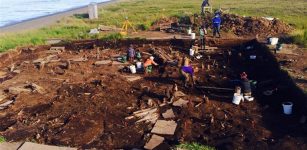 Archaeologists uncover new Yup’ik artifacts near Quinhagak, Southwest Alaska
Artifacts | Aug 28, 2015
Archaeologists uncover new Yup’ik artifacts near Quinhagak, Southwest Alaska
Artifacts | Aug 28, 2015 -
 Ancient Egyptians Knew About ‘Demon Star’ Algol’s Variability 3,000 Years Before Western Astronomers
Archaeology | Nov 13, 2018
Ancient Egyptians Knew About ‘Demon Star’ Algol’s Variability 3,000 Years Before Western Astronomers
Archaeology | Nov 13, 2018 -
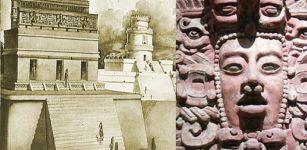 Ancient Maya Drug Containers – Scientists Identified What’s Inside
Archaeology | Jan 16, 2021
Ancient Maya Drug Containers – Scientists Identified What’s Inside
Archaeology | Jan 16, 2021 -
 Linked Human Skeletons Lying In Spiral Circle Unearthed In Pre-Aztec Burial Pit Near Mexico City
Archaeology | Feb 7, 2018
Linked Human Skeletons Lying In Spiral Circle Unearthed In Pre-Aztec Burial Pit Near Mexico City
Archaeology | Feb 7, 2018 -
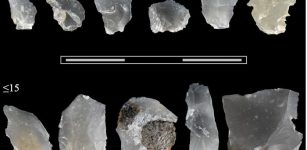 Scientists Unravel Why Humans Used Tiny Flakes 300,000 Years Ago
Archaeology | Dec 15, 2022
Scientists Unravel Why Humans Used Tiny Flakes 300,000 Years Ago
Archaeology | Dec 15, 2022 -
 Unexplained Mysteries Of The Superstition Mountains – A Gateway To Other Worlds?
Featured Stories | Dec 15, 2020
Unexplained Mysteries Of The Superstition Mountains – A Gateway To Other Worlds?
Featured Stories | Dec 15, 2020 -
 Secrets Of The Lost Tomb X – Enigmatic Boxes And Unusual Samples – Part 2
Ancient Mysteries | Apr 12, 2019
Secrets Of The Lost Tomb X – Enigmatic Boxes And Unusual Samples – Part 2
Ancient Mysteries | Apr 12, 2019 -
 Mysterious Ancient Underground Chambers Beneath Jerusalem Baffle Archaeologists
Archaeology | Jul 6, 2020
Mysterious Ancient Underground Chambers Beneath Jerusalem Baffle Archaeologists
Archaeology | Jul 6, 2020 -
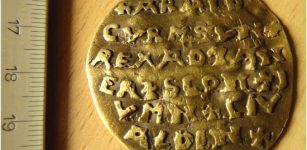 Mysterious Golden Curmsun Disc And Its Connection To King Harald Bluetooth And The Legendary Jomsvikings
Artifacts | Apr 13, 2022
Mysterious Golden Curmsun Disc And Its Connection To King Harald Bluetooth And The Legendary Jomsvikings
Artifacts | Apr 13, 2022 -
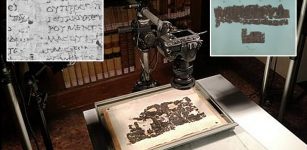 Carbonized Herculaneum Papyrus Begins Revealing Its Ancient And Historical Secrets
Artifacts | Apr 24, 2024
Carbonized Herculaneum Papyrus Begins Revealing Its Ancient And Historical Secrets
Artifacts | Apr 24, 2024 -
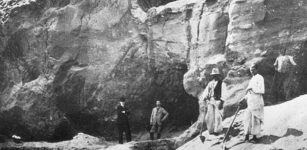 Neanderthals Decorated Their Caves With Rocks 130,000 Years Ago – Find At Krapina Site Reveals
Archaeology | Jan 19, 2017
Neanderthals Decorated Their Caves With Rocks 130,000 Years Ago – Find At Krapina Site Reveals
Archaeology | Jan 19, 2017 -
 Unexplained Mystery Of The Dangerous Invisible Enemy In A French Town
Featured Stories | Feb 25, 2024
Unexplained Mystery Of The Dangerous Invisible Enemy In A French Town
Featured Stories | Feb 25, 2024 -
 LIDAR Discovers Lost Colonial City Hidden In The Amazon Rainforest
Archaeology | Oct 22, 2024
LIDAR Discovers Lost Colonial City Hidden In The Amazon Rainforest
Archaeology | Oct 22, 2024 -
 Islands Of The Tropical Pacific Ocean Were Settled Much Earlier Than Previously Thought – New Theory
Archaeology | Dec 20, 2022
Islands Of The Tropical Pacific Ocean Were Settled Much Earlier Than Previously Thought – New Theory
Archaeology | Dec 20, 2022 -
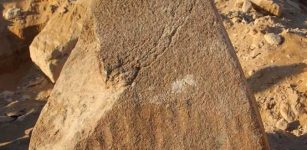 Mini-Pyramid Discovered In South Saqqara, Egypt
Archaeology | Oct 13, 2017
Mini-Pyramid Discovered In South Saqqara, Egypt
Archaeology | Oct 13, 2017 -
 Mysterious Lost Civilization Of Tiahuanaco – Uncomfortable Truth About One Of The World’s Oldest Cities
Ancient Mysteries | May 24, 2020
Mysterious Lost Civilization Of Tiahuanaco – Uncomfortable Truth About One Of The World’s Oldest Cities
Ancient Mysteries | May 24, 2020 -
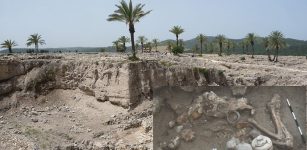 Evidence Of Brain Surgery Performed 3,000 Years Ago Discovered In Tel Megiddo, Israel
Archaeology | Feb 23, 2023
Evidence Of Brain Surgery Performed 3,000 Years Ago Discovered In Tel Megiddo, Israel
Archaeology | Feb 23, 2023 -
 Lost Ancient Texts Of The Star Catalogue Composed By The Greek Astronomer Hipparchus Found
News | Feb 21, 2023
Lost Ancient Texts Of The Star Catalogue Composed By The Greek Astronomer Hipparchus Found
News | Feb 21, 2023



